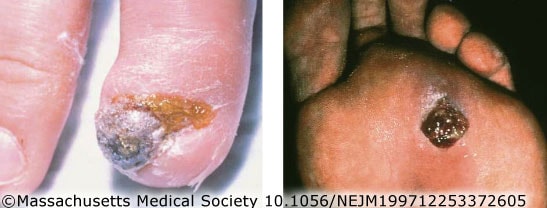Key points
- People get Bartonella quintana from the human body louse.
- B. quintana infection occurs worldwide and is most commonly associated with body louse infestations among people living in crowded conditions who have limited access to hygienic services.

Transmission
Bartonella quintana bacteria are spread to people by human body lice. Body lice spread from person to person by close physical contact or through shared clothing or bedding. B. quintana infection is most commonly associated with body louse infestations in areas of high population density and poor sanitation. People experiencing homelessness are at increased risk of developing infection with B. quintana because of limited access to shower and laundry facilities. B. quintana infection occurs worldwide. During the first World War, infection with B. quintana was referred to as "trench fever" due to the many cases among soldiers who lived in crowded trenches under poor hygienic conditions.
Signs and symptoms
- Fever (may occur once or repeatedly).
- Bone pain (mainly in the shins, neck, and back).
- Skin lesions called "bacillary angiomatosis".
- Bacillary angiomatosis primarily affects people with weakened immune systems, such as those with advanced HIV infection. Bacillary angiomatosis can present as vascular lesions in the skin, under the skin, in bone, or in other organs.
- Bacillary angiomatosis primarily affects people with weakened immune systems, such as those with advanced HIV infection. Bacillary angiomatosis can present as vascular lesions in the skin, under the skin, in bone, or in other organs.

Endocarditis
As with many Bartonella species, B. quintana can sometimes cause infection of the heart valves (endocarditis). In many cases, blood cultures might be negative (culture-negative endocarditis), which can make the diagnosis more challenging.
Prevention
- Avoid exposure to human body lice. Body lice are typically associated with crowded living conditions and limited access to bathing and clean clothes.
- Do not share clothing, beds, bedding, or towels used by a person who might have body lice.
- Access to regular showers and laundry services is critical to prevent quintana infection among people living in congregate shelters or who lack access to housing.
- When washing clothes or bedding that may be infested with body lice, use hot water above 55 degrees Celsius (130 degrees Fahrenheit) and dry on high heat to kill lice and their eggs.
- Information about treating body lice is also available.
